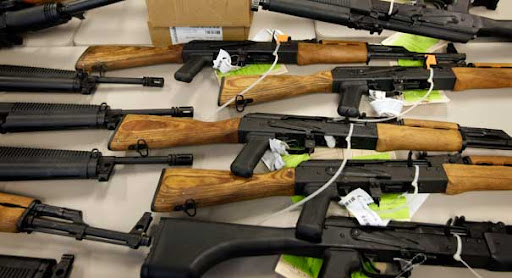 Representatives of the Bureau for Alcohol Tobacco and Firearms admitted that mistakes had been made in the operation, but officials at the Government Oversight and Reform Committee hearing tried to defend the operation as a well-intentioned effort gone wrong.
Representatives of the Bureau for Alcohol Tobacco and Firearms admitted that mistakes had been made in the operation, but officials at the Government Oversight and Reform Committee hearing tried to defend the operation as a well-intentioned effort gone wrong.
ATF representatives said they knew that guns — according to one estimate just over 1,000 firearms — were going to Mexico and ending up in the hands of criminals there, but that was the point: The ATF was attempting to trace the guns through criminal networks in order to track gun- and drug-trafficking routes.
“The goal of the operation was to disrupt, dismantle, and destroy drug cartels purposely, knowingly allowing the guns to go to Mexico,” said William Newell, the former special agent in charge for the ATF Phoenix field division.
Newell said in prepared testimony that the purpose of the operation was to get beyond the straw purchasers on the street and to make arrests up the chain of command in criminal organizations, but lawmakers criticized the operation as misconceived from the start.
Under questioning from Peter Welch (D-Vt.), Newell said that ATF agents would sell guns to buyers involved in criminal networks and would then follow those individuals and place them under surveillance.
“So a load of assault rifles has been delivered to a middleman. Was there a plan by which you would follow where those guns went?” Welch asked.
Newell said that agents would continue surveillance of the individuals but that because of resource constraints, agents would be called away to other cases and surveillance would cease, seemingly leaving the buyer to travel freely with the guns he had purchased from government agents.
Newell said that, in hindsight, the operation should have included greater risk-assessment in order to gauge progress and to check where the guns involved had turned up.
It is unclear to what extent senior officials at ATF knew about the operation, but agents said Tuesday that they had passed information about the operation up the chain of command. William McMahon, the ATF deputy assistant director, said that he had informed his superiors about the operation, but when pressed during questioning he said he was unaware of some details.
Tuesday’s hearing came on the heels of a report released by the oversight committee that found U.S. officials in Mexico City had known about the operation and had tried to have it stopped but were rebuffed by their superiors.
The Spanish Untouchables
-
[image: Busto del Rey Juan Carlos I de España en su vi...]
A new tell-all book that details what led to Spanish king Juan Carlos
giving up the throne wou...


















0 comments:
Post a Comment